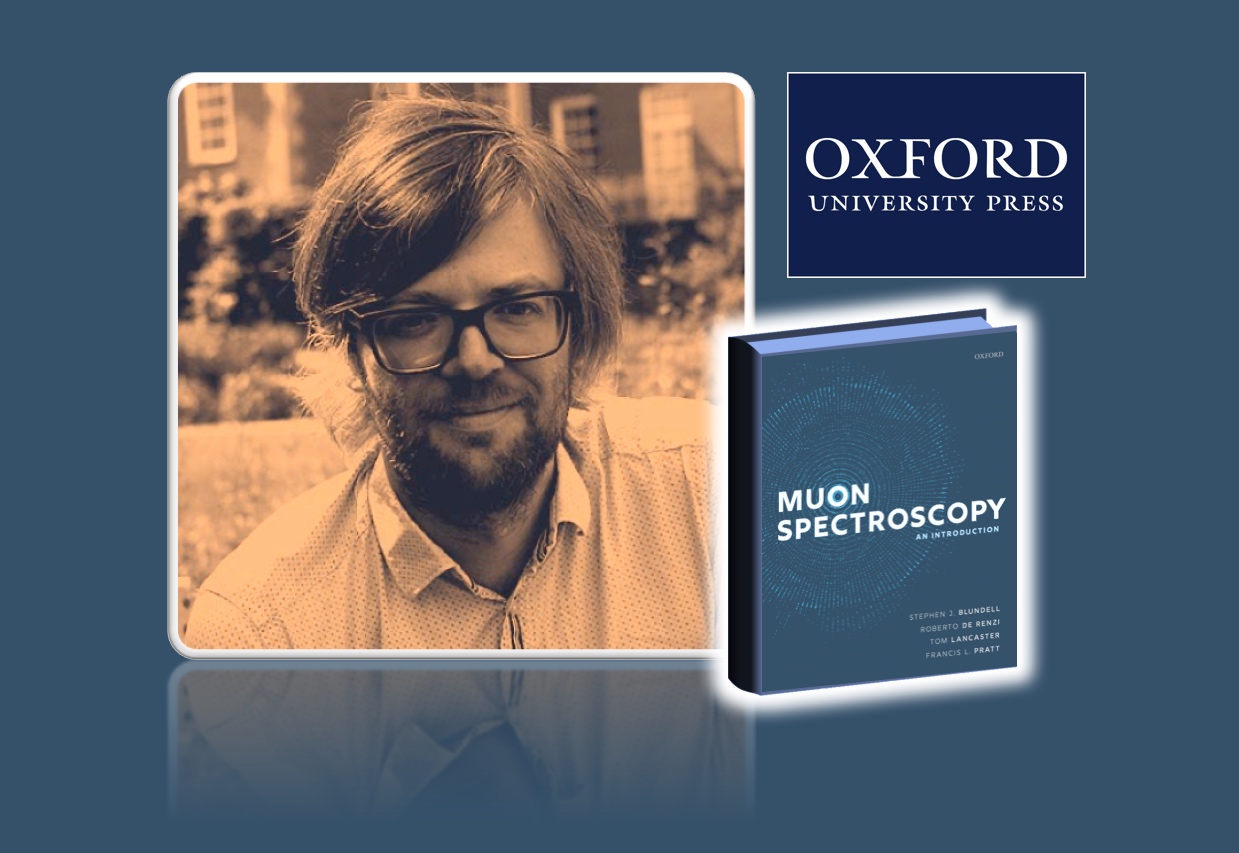Prof Tom Lancaster co-writes new textbook, 'Muon Spectroscopy: An Introduction', published by Oxford University Press

Durham Physics Department's Prof Tom Lancaster is one of the authors of a new textbook on Muon Spectroscopy, which has just been published by Oxford University Press.
Muons, radioactive particles produced in accelerators, have emerged as an important tool to study problems in condensed matter physics and chemistry. Beams of muons with all their spins polarized can be used to investigate a variety of static and dynamic effects and hence to deduce properties concerning magnetism, superconductivity, molecular or chemical dynamics and a large number of other phenomena.
The technique was originally the preserve of a few specialists located in particle physics laboratories. Today it is used by scientists from a very wide range of scientific backgrounds and interests.
This modern, pedagogic introduction to muon spectroscopy is written with the beginner in the field in mind, but also aims to serve as a reference for more experienced researchers. The key principles are illustrated by numerous practical examples of the application of the technique to different areas of science and there are many worked examples and problems provided to test understanding.
The book vividly demonstrates the power of the technique to extract important information in many different scientific contexts, all stemming, ultimately, from the exquisite magnetic sensitivity of the implanted muon spin.
This book has been edited by Prof. Tom Lancaster (Durham), Prof. Stephen Blundell (Oxford), Prof. Roberto De Renzi (Parma), and Dr. Francis Pratt (ISIS).
Available from Wednesday 10th November from many good book stockists including Blackwells, WHSmith, Waterstones and Amazon.


/prod01/prodbucket01/media/durham-university/departments-/physics/teaching-labs/VT2A9034-1998X733.jpeg)